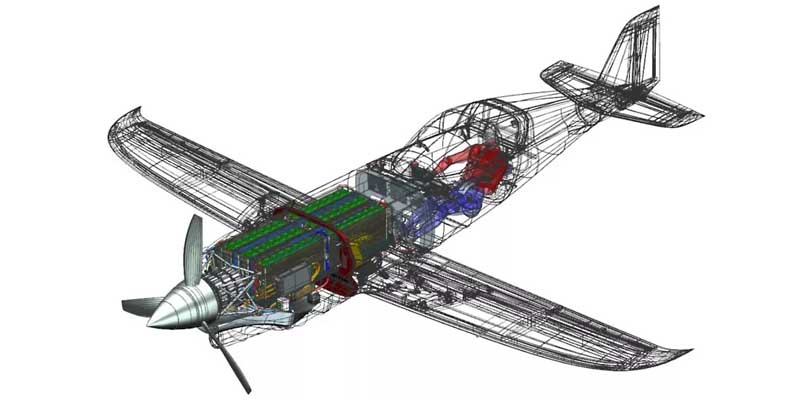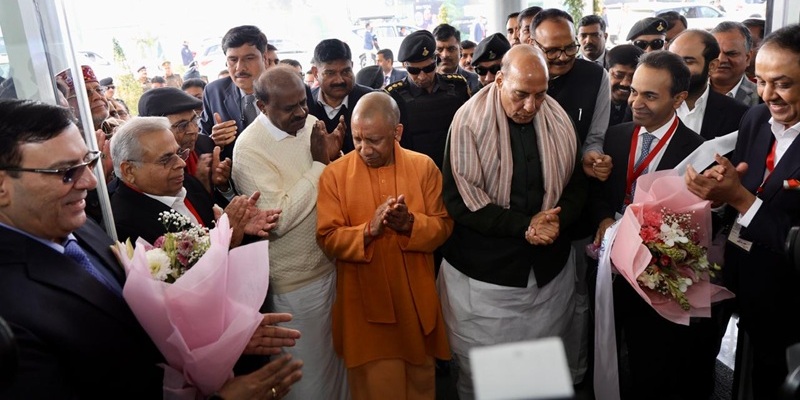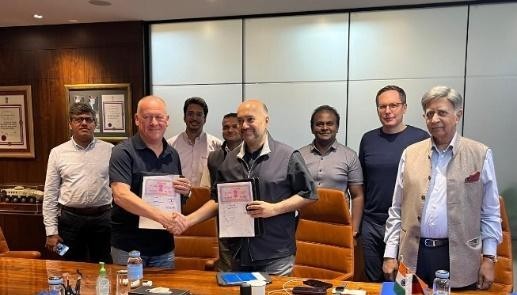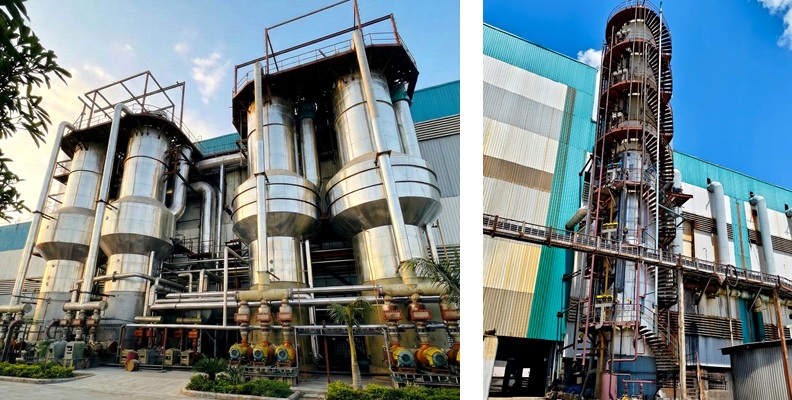Schedule a Call Back
Powering green manufacturing in India's industrial landscape
 Articles
Articles- Jan 16,24

Manufacturing is an integral pillar in India’s economic growth, owing to the performance of the automotive, engineering, chemical, pharmaceutical, and consumer durable sectors. 17 per cent of the nation’s GDP is from manufacturing (IBEF), employing over 27.3 million people. Also, the Indian government hopes to have 25 per cent of the economy’s output from manufacturing by 2025. However, the manufacturing sector in India currently contributes to nearly 40 per cent of the country's total energy consumption, and it is also one of the significant sources of greenhouse gas emissions, which stood at 2.88 gigatons in 2021.
Given India’s growth aspirations, it must decouple the growth from emissions. There is an ambitious plan to produce 50 per cent energy through green means by 2030 and zero emissions by 2070! Therefore, it is pertinent for India's manufacturing sector to make continuous efforts to adopt a sustainable approach.
Sustainable manufacturing produces economically viable products that can diminish adverse environmental effects and save energy. Engineering simulation is a scientific way of ensuring improved manufacturing processes by virtual testing before production. This reduces the design iteration wastage and ensures optimum efficient production techniques to produce a robust and reliable product. Engineers today can build better products quickly and sustainably while knowing beforehand how these product designs will perform in the real world. For end-to-end sustainable manufacturing, one must have a holistic view of design and engineering methods, sourcing channels, operational processes, and supply chains. Let's discuss some of the essential aspects of sustainable manufacturing and how simulation plays a crucial role in achieving the same.
Carbon-neutral strategies across different facets of manufacturing
The manufacturing industry is the most significant contributor to global warming, so it is essential to cut greenhouse gas emissions to as close to zero as possible.
Simulation is the answer! Leading American Energy company has used CFD simulations to design low NOx burners to retrofit their existing furnaces. These new burners helped achieve a significant reduction in emissions.
Few global companies have developed sustainable manufacturing processes using Carbon Capture technologies. Here, CFD simulation has been used extensively to design and optimise the various CO2 capture technologies such as absorption, fluidised bed, and chemical looping.
Material selection optimisation
Material selection and strategies become imperative to enable continued reduction of energy and CO2 emissions before manufacturing any product, with precise data around the types of material used, which is a driving factor in future product designs.
With the help of material data management solutions, manufacturers can understand material data and its impacts on sustainability and broader societal factors to formulate the right strategy for their product manufacturing. From a Sustainability perspective, an eco-audit of material selection is essential for the environmental impact assessment.
A leading aerospace could rapidly answer complex questions regarding the optimum material, mechanical, thermal, and electrical resistivity requirements for battery cell holder. Further, they were able to compare the environmental and regulatory impact of their selected polycarbonate to effectively assess its impact on overall sustainability and reduce its carbon footprint of the aircraft.
Energy-efficient process simulations
Digital engineering has a significant influence on energy efficiency and sustainability. Simulation solutions facilitate a safe and reliable transition to a lower-carbon energy mix that will sustainably meet the world’s growing and insatiable demand for power. It can fast-track low-carbon technology innovation and improve traditional energy sources' productivity, reliability, safety, and environmental footprint.
In the pursuit of alternate and safe fuel, NanoSUN, based in the UK, worked with Ansys CFD simulations to produce scalable green hydrogen fueling solutions that are safe and efficient. They use CFD simulations to track and monitor potential leaks within their hydrogen refueling stations to prevent fires. Using Multiphysics modelling, a leading process equipment manufacturer reduced the material required by 14 per cent while increasing the heat exchanger's energy efficiency.
Virtual prototyping
Simulation solutions enable complete virtual prototyping for manufacturing and design processes. This allows companies and engineers to develop products faster, test designs early in the development cycle, reduce the amount of physical prototyping required, and minimise raw material costs and decrease waste.
A leading American washing machine manufacturer used simulations to save 27 per cent in water consumption, 11 per cent in energy consumption, and 8 per cent in waste production. Startup Nebia has developed a 70 per cent water-efficient shower using CFD tools, another excellent example in this direction.
Lean Manufacturing and Supply Chain Management
The foundational principle of lean manufacturing is boosting productivity and reducing waste simultaneously. Manufacturers can test and optimise their processes in a risk-free virtual environment before executing them in the real world.
During the global pandemic, when supply chain logistics and traditional manufacturing stalled, organisations felt the need for digitally enabled additive manufacturing. Additive manufacturing and its integration into the software and digital ecosystem is a powerful tool in manufacturing supply chains. Decentralisation of suppliers and interchangeability will reduce further dependencies on the current supply chain infrastructure.
Additive Manufacturing simulation provides complete end-to-end workflow from design to manufacturing. It helps optimise 3D printing, including print design, process simulation and material analysis.
Digital Twin
A digital twin is a virtual representation of a physical asset in operation. Digital twin can model entire manufacturing systems and enable real-time energy optimisation and emissions reduction monitoring.
Digital twin can reduce greenhouse gas emissions by managing the operation of assets and resulting in lower energy consumption, extending the useful life of an asset and saving the manufacturing emissions associated with building a new asset, and finally, by preventing fugitive emissions through real-time monitoring of emissions and potential leakages.
A simulation-driven digital twin enables engineers to explore “what if” scenarios. Starting with the current state of the digital twin, which mirrors that of the physical asset, they can run physics-based simulations to determine what would happen if they reduced energy consumption, for example. By testing proposed changes virtually, they can see the results before making any changes to the physical asset and be assured that the change will be safe and beneficial to operations.
Digital Transformation across industries
All sectors face challenges that are unique and growing. Simulation has the capability and tools to transform the design and production processes across industries.
In the aviation sector, cost reduction across the entire product life cycle and acceleration of developing safer and more sustainable aircraft systems are being done with simulation solutions. In the automotive industry, 1000x faster innovation can be achieved while improving safety and performance by simulating the digital twin of highly complex products throughout the product lifecycle.
It is necessary today to accelerate innovation with consumer goods and deliver competitively distinguished products to market faster and at a lower cost than the competition while also addressing sustainability concerns. For this, digital transformation of consumer product ideation, design and manufacturing processes is the key.
Regarding power, simulation supports a safe and reliable shift to a lower-carbon energy mix that will meet the world’s rising and limitless demand for it more sustainably.
Enabling electronics technologies must deliver exceptional levels of reliability for 5G, autonomous vehicles, smart products, homes, cities, and factories to come to the market. Engineers face tremendous product reliability and performance challenges today with countless sensors, microprocessors, and connected components. Engineering simulation plays a vital role in facilitating high-tech companies to deliver innovative, reliable, energy-efficient, cost-effective, and quick-to-market products.
Conclusion
To summarise, simulation software like Ansys tools empowers companies to rapidly evaluate and scale sustainable innovations, reduce environmental impact, and foster a greener future. New products can be designed, developed, and deployed faster. Physical prototypes are reduced, and operations are streamlined to save energy and emissions. Simulation also helps identify lighter, better materials and more dynamic, collaborative processes to help the world operate sustainably. Simulation thus makes sustainable design more economically viable.
The government is aggressively promoting manufacturing in India with ‘Make in India’ and more favorable policies and incentives for green production. The different stakeholders in manufacturing, including the government, industry, and academia, must adopt and utilise these digital innovations for a greener future.
About the Author
Prashant Khare is currently working as Director, Application Engineering in Ansys. With an experience of 17 years and managing the team of CAE experts, focusing on Structural products, he has been working closely with various industry teams at ANSYS and carries a rich experience of solving engineering problems for automotive, power, aviation, electronics and other Industries.
Related Stories

How is AI shaping the future of cement milling?
AI is transforming cement milling by enabling dynamic, data-driven control that improves energy efficiency, stabilises throughput and enhances asset reliability. By leveraging real-time data, predic..
Read more
3D Printing Strengthens the Foundations of Smart Manufacturing
The global 3D printing market was estimated at $30.55 billion in 2025 and is projected to reach $168.93 billion by 2033, growing at a compound annual growth rate of 23.9 per cent from 2026 to 2033.
Read more
Physical AI Emerges as the Operating System of the Modern Industrial Economy
Physical AI is transforming automation by merging robotics and generative AI to reshape productivity and unlock new industrial applications, shares Dijam Panigrahi, Co-founder and COO, GridRaster In..
Read moreRelated Products

Fanless Industrial Pc for Smart Manufacturing
CONTEC Launches BX-M4600 Series - Fanless Industrial PC for Smart Manufacturing.















